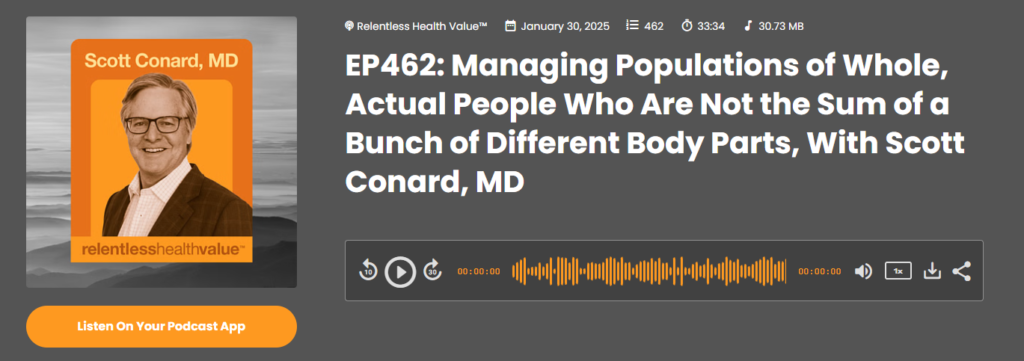
Today, Dr. Scott Conard discusses the evolution of his life’s work, focusing on his current collaboration with Mike Adams from 7-Eleven to support their plan members. Their efforts revolve around a few striking yet common insights that many plan sponsors will recognize in their own data.
One key finding: roughly 70% of individuals who exceed a plan’s high-cost threshold in any given year were previously high-risk but low-cost. These individuals don’t appear out of nowhere—they were identifiable in prior years. The challenge is to identify them early and provide the right interventions to prevent them from transitioning into the high-risk, high-cost category.
Effectively managing a population requires proactive identification of high-risk, low-cost members before they escalate into high-cost care. To achieve this, Dr. Conard follows a best-practice, stepwise approach, which we’ll outline below. While we cover each step in the discussion, some are explored in greater depth than others.
Best-Practice Approach to Managing Population Health
1. Get the Data – The Whole-Person Risk Score
Rather than categorizing members into isolated disease groups, the goal is to assess risk at a whole-person level. Patients aren’t just a collection of separate conditions—they’re complex human beings whose health factors interact.
Dr. Conard often uses a car analogy: If a car’s tires wear out, you simply replace them. But humans don’t work that way. A patient may need surgery but be unable to proceed because their cardiovascular markers are too high. Yet, they can’t take the necessary medication due to contraindications with existing kidney or liver conditions. This fragmentation in care often leads to patients being bounced between specialists who don’t communicate effectively.
A real-world example comes from Miriam Paramore, who shares a harrowing story about her father’s end-of-life care—an illustration of why whole-person risk scoring is critical.
2. Provide Access to Advanced Primary Care Teams
Members need access to high-functioning primary care teams that are empowered to make informed referrals to top-tier specialists. These teams should ensure care is high-quality, appropriate, and optimized for each patient.
3. Align Benefit Design with Optimal Care Pathways
Plan sponsors must structure benefits to support the care members need. If benefit design creates barriers—like high co-pays for essential services—members may forgo necessary care, leading to worse outcomes and higher costs in the long run.
Dr. Mark Fendrick once compared benefit design and optimized medical care to peanut butter and jelly—they must go together. For example, if a doctor tells a diabetic patient to get regular foot exams to prevent amputations, but the patient can’t afford the co-pay, the system fails. The patient suffers, the doctor’s quality scores take a hit, and the plan sponsor ultimately pays for costly, avoidable complications.
Step 3 ensures benefit design supports, rather than hinders, effective care.
4. Engage Members with Navigation Tools
Members need guidance to navigate the healthcare system effectively. Tools like My Personal Health Assistant play a crucial role in engaging unengaged patients and ensuring they follow optimal care pathways. These tools complement advanced primary care efforts, helping members stay on track and receive the right care at the right time.
By following this structured approach, plan sponsors can proactively manage population health, reduce costs, and improve outcomes—transforming their approach from reactive to strategic.

